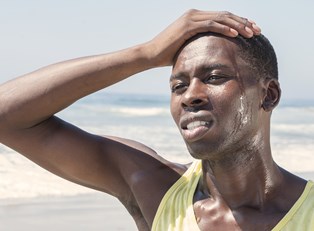Excessive sweating is an embarrassing problem that many people throughout the world experience. The medical term for this condition is hyperhidrosis, and it primarily affects the underarms, palms of the hands, soles of the feet, and groin area. However, it can sometimes present itself on the face, back, and chest as well.
Excessive sweating can inhibit effectiveness in daily activities such as holding a pencil, operating a vehicle, or handing delicate objects. Additionally, it may lead to awkwardness in social situations, such as shaking hands during an introduction or presenting information before a group. Luckily, there are numerous ways to treat this condition, and here are five of the most effective.
Antiperspirants
The most common approach for treatment is the use of antiperspirants. Antiperspirants are the chemicals found in deodorant used to stop moisture from exiting the sweat glands by creating a plug with aluminum salt. These products are typically the first step in treating excessive sweating, but they may be paired with other treatments too.
There are two main types of antiperspirants: over-the-counter and prescription. Over-the-counter versions may not work as well for people with particularly severe sweating. However, some people may find that prescription antiperspirants cause irritation due to an allergic reaction. Although commonly used on the underarms, antiperspirants can be prescribed for other body areas in certain instances of excessive sweating.
Botox Injections
Botox has been found to reduce excessive sweating in a large percentage of patients. A series of injections are administered to the affected area in order to decrease the symptoms of wetness. Excessive sweating gradually disappears over the span of a week after the treatment but eventually returns within six months to a year later. Additionally, follow up appointments are usually necessary for touch up injections. If this procedure is not covered by insurance, it can cost over one thousand dollars per treatment, depending on the size of the area and the effectiveness of the treatment.
Iontophoresis
Combining water and electricity never sounds like a good idea, but it might be the trick for a person with excessive sweating issues. Practiced since the 1940s, iontophoresis is a simple process that uses pans of water and a mild electrical current. The patient puts his or her hands or feet into the shallow bath for about half an hour three to four times a week until the desired results are achieved. Unfortunately, this method is ineffective for underarms as it causes irritation and is impractical to immerse that area of the body into a pan. Other disadvantages include the frequency of treatments and the fact that excessive sweating returns once treatment is stopped.
Medications
Medication is another option for patients with particularly severe excessive sweating. The most common class of drugs used for treatment are known as anticholingerics. These medications work by blocking the transmission of the chemical signals to the sweat gland receptors. However, as with many medications, there are side effects to consider. Because the medicine blocks receptors throughout the entire body, patients report side effects such as dry mouth, constipation, and blurred vision.
Surgery
While it should only be considered as a last resort, surgery can be an effective way to eliminate excessive sweating. This procedure, called endoscopic thoracic sympathectomy, works to block the communication between the nerve cells and sweat glands by clamping or burning the nerve in order to disrupt transmission.
As with any surgery, there are numerous side effects and risks. Side effects include “compensatory sweating,” where the body no longer sweats in the area surgically treated and instead excessively sweats in a new area such as the stomach, legs, or face. Other rare but serious side effects include bleeding, infection, and death. Less invasive treatment options should definitely be explored before first.




